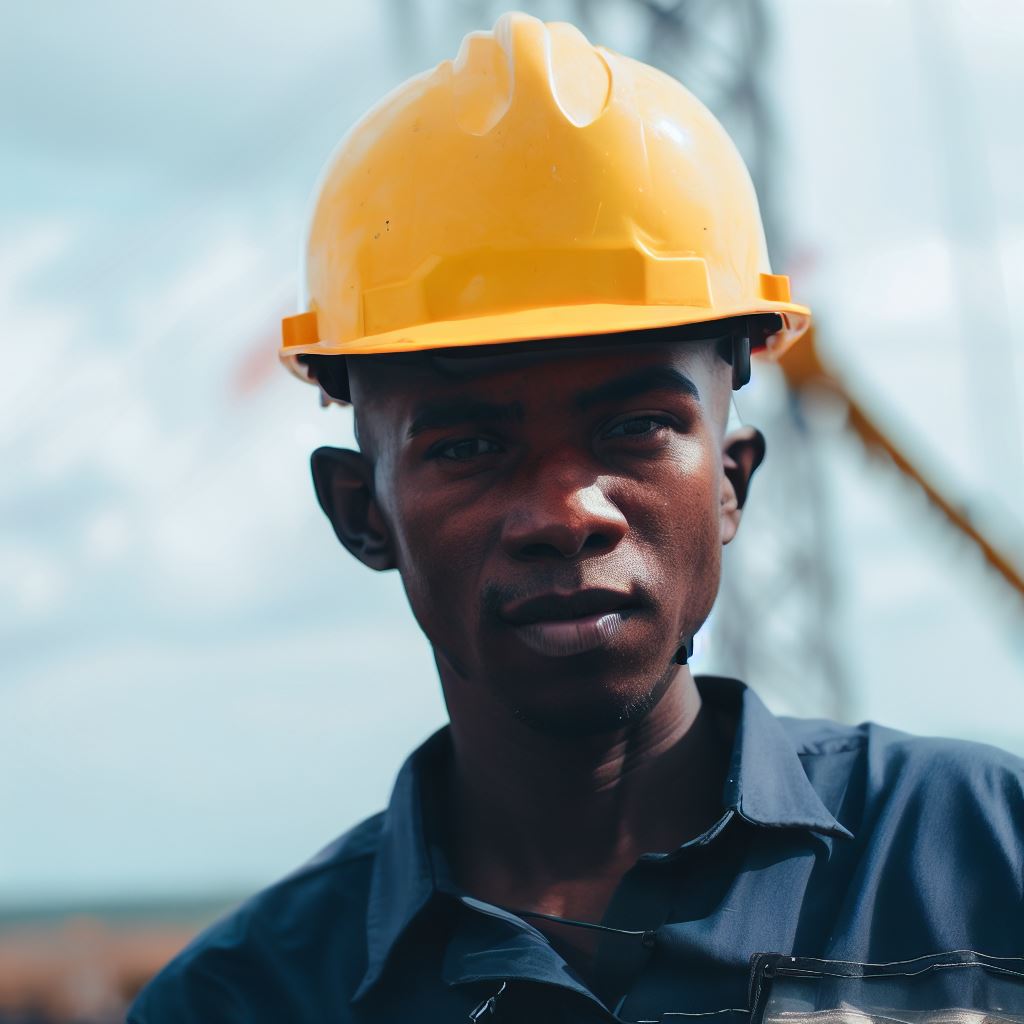Introduction
Let’s talk about Wind Turbine Maintenance in Nigeria.
Wind turbine maintenance is crucial for efficient operation and longevity of wind turbines.
This blog section focuses on wind turbine maintenance in Nigeria, addressing key issues and challenges.
Briefly introduce the topic of wind turbine maintenance
- Wind turbine maintenance is crucial.
- Ensures optimal energy production.
- Maximizes turbine lifespan.
- Prevents costly breakdowns.
- Safety is a top priority.
Mention the focus on wind turbine maintenance in Nigeria
- Nigeria’s wind energy sector is growing.
- Maintenance plays a pivotal role.
- Enhances energy reliability.
- Promotes local job creation.
- Boosts renewable energy adoption.
- Sustainability is key.
- This chapter delves deeper.
Importance of Wind Turbine Maintenance
Explain the significance of maintaining wind turbines
Maintaining wind turbines is crucial for the efficient and safe operation of these renewable energy sources.
Regular maintenance helps identify and address any potential issues, ensuring optimum performance and preventing costly breakdowns.
Discuss the benefits of regular maintenance
- Maximizing turbine efficiency and performance: Regular maintenance allows for fine-tuning of the turbine, optimizing its energy production.
- Ensuring safe operation: Regular inspections and maintenance promote the safety of personnel and the surrounding environment.
- Prolonging the turbine’s lifespan: By addressing wear and tear promptly, maintenance activities extend the turbine’s operational life.
- Reducing the risk of costly repairs: Timely maintenance helps identify and fix minor issues, preventing major and expensive repairs.
Wind turbines are intricate machines that require meticulous care to function at their best.
Neglecting maintenance can lead to reduced energy production efficiency, higher operation costs, and safety risks.
Efficiency and Performance
Through regular maintenance, wind turbine operators can ensure that the machinery operates at optimal efficiency.
Components such as the gearbox, rotor blades, and control systems are examined and fine-tuned to function harmoniously.
This reduces unnecessary strain on the turbine and improves its energy output.
Safe Operation
Maintaining wind turbines guarantees the safety of operators and nearby communities.
Regular inspections identify potential hazards, such as loose bolts, worn-out rotor blades, or damaged electrical connections.
Addressing these issues promptly prevents accidents and reduces downtime due to repairs.
Prolonged Lifespan
A well-maintained wind turbine can have an extended operational life.
Regular checks and cleaning of critical components, such as the turbine tower, electrical systems, and lubrication of mechanical parts, prevent premature wear and tear.
This prolongs the lifespan of the turbine and maximizes the return on investment.
Reduced Repair Costs
By adhering to a maintenance schedule, wind turbine operators can identify and fix minor issues before they escalate into major problems.
Addressing potential failures promptly reduces the need for costly repairs or component replacement.
This results in significant cost savings over the turbine’s lifetime.
Regular maintenance is not just about fixing visible issues but involves comprehensive inspections, testing, and optimization activities.
Wind turbine operators must invest in ongoing maintenance to achieve the best possible performance, maximize energy production, and ensure the longevity of these valuable assets.
Overview of Wind Turbine Components
A wind turbine is a complex structure composed of several key components that work together to generate electricity from wind energy.
Understanding the structure and components is crucial for efficient maintenance of wind turbines in Nigeria.
Basics of Wind Turbine Structure
A wind turbine consists of a tower, rotor blades, gearbox and generator, and various electrical and control systems.
These components are essential for converting wind energy into usable electricity.
Key Components Requiring Maintenance
- Rotor Blades
- Gearbox and Generator
- Tower Structure
- Electrical and Control Systems
Maintaining these key components is essential to ensure the optimal performance of wind turbines.
Neglecting maintenance can lead to reduced efficiency, costly repairs, and potentially hazardous situations.
Regular inspections, conducted by trained technicians, are necessary to identify any issues before they escalate into major problems.
Maintenance activities may include cleaning, lubrication, repair or replacement of worn-out parts, and calibration of control systems.
In the Nigerian context, wind turbine maintenance should be carried out by skilled technicians who have received proper training and have access to the necessary equipment and spare parts.
This ensures that any maintenance tasks are performed accurately and safely.
Furthermore, establishing a maintenance schedule tailored to local conditions and the specific wind turbines in use is crucial.
Factors such as wind patterns, temperature variations, and exposure to dust or sand may require more frequent inspections and maintenance activities.
In short, wind turbine maintenance in Nigeria requires a comprehensive understanding of the structure and key components involved.
Rotor blades, gearbox and generator, tower structure, and electrical systems all require regular maintenance to ensure optimal performance and safety.
By investing in proper maintenance practices, Nigeria can maximize its wind energy potential and contribute to a sustainable and clean energy future.
Read: Nigeria’s Wind Energy Boom: Opportunities for Technicians
Common Maintenance Challenges in Nigeria
Specific Challenges Faced in Wind Turbine Maintenance in Nigeria
- High temperatures and harsh weather conditions
- Frequent dust storms and sand abrasion
- Limited access to spare parts and skilled technicians
- Inadequate funding for maintenance and repairs
- Poor grid infrastructure and unreliable power supply
- Difficulties in transportation of equipment and materials
- Challenges with remote monitoring and diagnostic systems
- Security concerns leading to restricted access to wind farms
- Lack of standardized maintenance procedures and guidelines
- Inefficient maintenance management and planning
Factors Affecting Wind Turbine Maintenance in Nigeria
- Climate: Nigeria’s hot and dry climate increases wear and tear on turbine components.
- Lack of Local Expertise: Limited availability of trained engineers and technicians specialized in wind turbine maintenance.
- Infrastructure Limitations: Insufficient road networks and transportation facilities hinder the delivery of equipment and materials.
- Availability of Spare Parts: Scarce supply of spare parts locally, leading to delays in repairs and maintenance.
- Power Supply: Unreliable grid infrastructure makes it challenging to carry out regular maintenance activities.
Impact of Challenges on Turbine Performance and Maintenance Practices
The above-mentioned challenges have significant consequences on wind turbine performance and maintenance practices in Nigeria:
- Reduced Reliability: Harsh weather and dust storms cause increased wear and failures in turbine components, resulting in frequent breakdowns.
- Decreased Efficiency: Lack of timely maintenance, spare parts, and skilled technicians leads to lower efficiency and output of wind turbines.
- Increased Downtime: Limited access to spare parts, funding, and skilled workers prolongs downtime during repairs, leading to decreased energy production.
- Higher Maintenance Costs: Importing spare parts and expertise increases the cost of maintenance, impacting the financial viability of wind farms.
- Delayed Repairs: Inadequate infrastructure and challenges in transportation cause delays in repairing turbines, further reducing their availability.
- Lower Revenue Generation: Unreliable power supply and decreased turbine performance result in lower revenue generation from wind farms.
- Compromised Safety: Lack of standardized maintenance procedures and limited expertise can compromise the safety of wind turbine operations.
Despite these challenges, the wind energy sector in Nigeria continues to grow, and efforts are underway to address these maintenance limitations.
Infrastructure development, investments in training and education, and the establishment of local supply chains are crucial for overcoming these hurdles.
Additionally, collaboration with international partners and sharing of best practices can further enhance wind turbine maintenance in Nigeria.
Read: Challenges and Rewards: Life as a Wind-Turbine Tech in Nigeria
Maintenance Best Practices
Provide an overview of recommended maintenance procedures
Maintaining wind turbines is essential to ensure their optimum performance and longevity.
Proper maintenance procedures must be followed to prevent failures and maximize energy production. These procedures include:
- Regular Visual Inspections: Conducting visual inspections of the turbine components, such as blades, gearbox, and tower, helps in identifying any visible damages or abnormalities.
- Lubrication: Regularly lubricating the moving parts of the turbine, such as the gearbox and bearings, reduces friction and wear, thereby extending their lifespan.
- Cleaning: Regularly cleaning the turbine’s exterior surface, including the blades, prevents the accumulation of dirt and debris that can affect the turbine’s aerodynamics.
- Electrical System Checks: Regularly inspecting and testing the electrical components, such as cables, connectors, and control systems, ensures their proper functioning and reliable performance.
- Bolt Tightening: Periodic checks and tightening of bolts and fasteners ensure that the turbine structure remains secure and stable, reducing the risk of structural damage.
- Environmental Monitoring: Monitoring environmental factors like temperature, humidity, and vibration levels helps in detecting potential issues and taking preventive measures in a timely manner.
Discuss the importance of routine inspections and preventive maintenance
Routine inspections and preventive maintenance are crucial for wind turbine maintenance. Here’s why:
- Early Identification of Issues: Regular inspections help in identifying any potential issues or damages at their early stages, allowing timely repairs and preventing costly breakdowns.
- Minimizing Downtime: Preventive maintenance, such as component replacements and system checks, reduces the risk of unexpected failures and downtime, ensuring continuous energy production.
- Enhancing Reliability: Regular maintenance improves the overall reliability and performance of wind turbines, minimizing the chances of sudden failures and maximizing their operational lifespan.
- Ensuring Safety: Proper maintenance procedures ensure the safety of both the turbine operators and nearby communities by minimizing the risks associated with faulty components or structural failures.
Highlight the significance of maintaining documentation and records
Maintaining documentation and records of wind turbine maintenance activities is essential due to the following reasons:
- Compliance with Regulations: Documentation helps demonstrate compliance with industry standards and regulations, ensuring the turbine is operating legally and safely.
- Performance Analysis: Detailed records allow for performance analysis, enabling operators to identify trends, track maintenance costs, and optimize maintenance schedules for better efficiency.
- Warranty and Insurance Claims: Accurate documentation is crucial for warranty claims and insurance coverage, ensuring that any maintenance-related issues are properly covered.
- Historical Reference: Having a documented maintenance history provides a valuable reference for future maintenance activities, helping in troubleshooting and making informed decisions.
Address the need for regular training and upskilling of maintenance staff
Investing in regular training and upskilling of maintenance staff is crucial for effective wind turbine maintenance due to the following reasons:
- Keeping up with Technology: Advancements in wind turbine technology require maintenance staff to stay updated with the latest procedures, tools, and techniques.
- Safety and Risk Management: Proper training ensures that maintenance staff can identify potential hazards, follow safety protocols, and mitigate risks associated with high-altitude work.
- Increased Efficiency: Well-trained staff can perform maintenance tasks more efficiently, reducing downtime and maximizing energy production, resulting in higher profitability.
- Knowledge Transfer: Regular training promotes knowledge transfer within the maintenance team, ensuring a skilled workforce capable of addressing complex maintenance challenges.
In fact, following recommended maintenance procedures, conducting routine inspections, maintaining documentation and records, and providing regular training to maintenance staff are essential best practices for ensuring the optimal performance and longevity of wind turbines.
By implementing these practices, wind farm operators in Nigeria can maximize their energy production and contribute to the sustainable development of the country’s energy sector.
Read: Top Training Programs for Wind-Turbine Technicians in Nigeria

Case Studies: Wind Turbine Maintenance in Nigeria
Present real-life examples of wind turbine maintenance projects in Nigeria
- In Yobe State, a wind turbine maintenance project was initiated in collaboration with local technicians.
- Eko Energy Solutions successfully completed a wind turbine maintenance project in Lagos, Nigeria.
- The Kano Wind Farm implemented a comprehensive maintenance plan to ensure optimal turbine performance.
Describe the specific challenges faced and how they were overcome
- Limited access to spare parts posed a challenge for wind turbine maintenance in Nigeria. Innovative solutions, such as 3D printing, were used to overcome this challenge.
- Lack of skilled technicians was another obstacle. Training programs and partnerships with educational institutions were established to address this issue.
- Harsh weather conditions, including strong winds and extreme temperatures, made maintenance activities more challenging. Robust maintenance procedures and regular inspections helped mitigate these challenges.
Discuss the outcomes and the impact on turbine performance
- The wind turbine maintenance projects in Nigeria resulted in improved turbine performance and increased energy generation.
- By implementing regular maintenance activities, the turbines achieved higher availability and decreased downtime.
- The use of predictive maintenance strategies allowed for early detection of potential issues, reducing repair costs and minimizing turbine performance degradation.
In essence, real-life wind turbine maintenance projects have been successfully conducted in Nigeria, overcoming challenges such as limited access to spare parts and a lack of skilled technicians.
Through these projects, turbine performance has been enhanced, leading to increased energy generation and improved availability.
The implementation of robust maintenance procedures and innovative solutions has played a crucial role in maximizing turbine performance in Nigeria’s wind power sector.
Read: Salaries and Benefits: Wind-Turbine Technicians in Nigeria
Future of Wind Turbine Maintenance in Nigeria
Explore the potential for growth in wind energy and maintenance industry in Nigeria
- Nigeria has immense potential for wind energy, with abundant wind resources in various regions.
- Harnessing this potential can lead to a significant growth in the wind energy and maintenance industry.
- The renewable energy sector, including wind energy, has the potential to provide jobs and economic growth.
- Wind turbine maintenance can create employment opportunities for skilled technicians and engineers.
- Transitioning to cleaner energy sources like wind power can reduce Nigeria’s dependence on fossil fuels.
Discuss possible solutions for overcoming current challenges
- The government needs to prioritize investments in wind energy infrastructure and maintenance.
- Collaboration between local and international experts can help in capacity-building and knowledge transfer.
- Training programs should be developed to ensure a skilled workforce for wind turbine maintenance.
- Implementing effective maintenance strategies and practices can improve wind turbine reliability and performance.
- Investment in research and development can lead to innovative solutions for wind turbine maintenance challenges.
Highlight the importance of government support, investment, and policy reforms
- Government support is crucial for the growth of the wind energy and maintenance industry in Nigeria.
- Providing incentives and tax breaks can attract private investments in wind energy projects.
- Policy reforms should facilitate the development and expansion of wind power generation in Nigeria.
- Clear regulations and streamlined permitting processes can encourage wind energy project development.
- Long-term contracts and power purchase agreements can provide stability for wind energy investors.
In general, Nigeria has significant potential for growth in the wind energy and maintenance industry.
Expanding wind power can create employment opportunities, reduce reliance on fossil fuels, and contribute to economic growth.
To overcome current challenges, investments in infrastructure, capacity-building, and research are necessary.
Government support, investment, and policy reforms are vital for fostering the growth of wind turbine maintenance in Nigeria.
By embracing wind energy, Nigeria can move towards a sustainable and clean future.
Conclusion
In summary, wind turbine maintenance is crucial for uninterrupted and efficient energy production.
The importance of wind turbine maintenance cannot be overstated in achieving sustainable energy production.
It is essential for Nigeria to promote further research and investment in wind energy and maintenance to maximize its potential.
Summarize the key points discussed in the blog post
- Wind-turbine maintenance is vital.
- It ensures uninterrupted energy supply.
- Nigeria’s wind sector is promising.
- Job opportunities abound.
- Sustainability is achievable.
Emphasize the importance of wind turbine maintenance for sustainable energy production
- Maintenance sustains wind turbines.
- Prevents costly downtimes.
- Maximizes clean energy output.
- Fosters a greener future.
- Reduces carbon footprint.
Encourage further research and investment in wind energy and maintenance in Nigeria
- Research fuels innovation.
- Investment drives growth.
- Nigeria can lead in wind energy.
- Embrace sustainable practices.
- Support the green transition.




